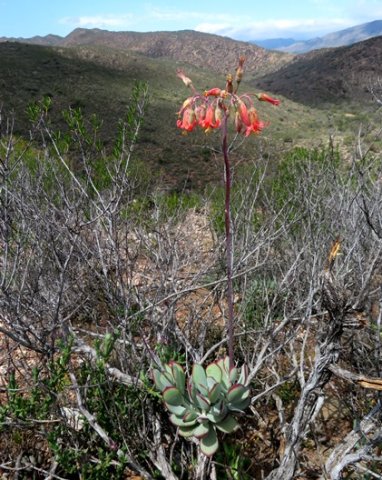Cotyledon orbiculata

Cotyledon orbiculata is a branched leaf succulent that is low-growing in the open, the inflorescence reaching 1, 3 m. Scrambling plants caught up in thicket, particularly in the Eastern Cape, may exceed 2 m in height.
Diversified into five recognised varieties and even more forms, the species occurs widespread in all provinces of South Africa, probably not in North West. These red-rimmed leaves with small apical protrusions were photographed in the Little Karoo west of Barrydale.
The habitat of C. orbiculata varies from winter rainfall in the west to summer rainfall in the eastern region, the plants growing in variably arid conditions. They cope in different soils among gravel and stones, on flats and slopes, in the open among scrub, in grass or thicket.
Four of the five varieties are considered not threatened in habitat early in the twenty first century. The fifth, var. flanaganii, found in only a small region of the Eastern Cape is near threatened (Smith, et al, 2017; Frandsen, 2017; iNaturalist; http://redlist.sanbi.org).

